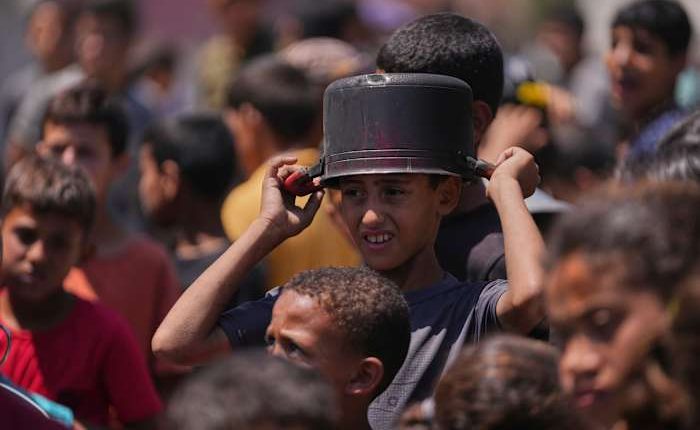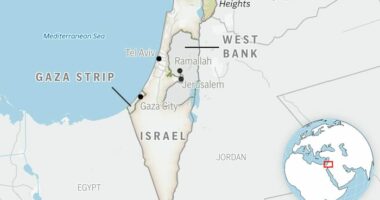Share this @internewscast.com

For months, U.N. officials, aid groups and experts have warned that Palestinians in Gaza are on the brink of famine.
Earlier this month, Israel loosened a prolonged blockade on the territory following international criticism, yet the U.N. humanitarian aid office reported Friday that the flow of supplies into Gaza is still heavily curtailed. They described the current food deliveries as mere trickles in an area suffering from extreme hunger levels.
The population of over 2 million in Gaza depends almost entirely on external aid for survival, as Israel’s 19-month military campaign has largely destroyed the territory’s ability to produce food.
Israel stated it enforced the blockade to pressure Hamas into freeing the hostages it holds and alleges that Hamas misappropriates aid, though it hasn’t presented proof of this. The U.N. maintains that mechanisms are in place to prevent significant misuse of aid, even though aid trucks have been looted, and desperate crowds have invaded aid warehouses at times.
No famine has been formally declared in Gaza.
Here’s a look at what famine means and how the world finds out when one exists.
What is famine?
The Integrated Food Security Phase Classification, the leading international authority on hunger crises, considers an area to be in famine when three things occur: 20% of households have an extreme lack of food, or essentially are starving; at least 30% of children suffer from acute malnutrition or wasting, meaning they’re too thin for their height; and two adults or four children per every 10,000 people are dying daily of hunger and its complications.
Famine can appear in pockets — sometimes small ones — and a formal classification requires caution.
Last year, experts said a famine was ongoing in parts of North Darfur in Sudan. Somalia, in 2011, and South Sudan, in 2017, also saw famines in which tens of thousands of people were affected.
Gaza poses a particular complication for experts since access is severely limited, making gathering data difficult if not impossible in some cases.
Last year, the IPC said an area can be classified as in “famine with reasonable evidence” if two of the three thresholds have been reached and crossing the third appears likely to have happened.
The IPC unites experts from more than 20 organizations like the U.N.’s health, development, and food aid agencies; charity CARE International; the Famine Early Warning Systems Network; and the European Union and the World Bank.
Who declares a famine?
The short answer is, there’s no set rule.
While the IPC says it is the “primary mechanism” used by the international community to analyze data and conclude whether a famine is happening or projected, it typically doesn’t make such a declaration itself.
Often, U.N. officials or governments will make a formal statement, based on an analysis from the IPC.
“There’s a widespread misunderstanding that someone has to declare a famine before it is a famine. That is not the case,” said Jens Laerke, a spokesman for the U.N. Office for the Coordination of Humanitarian Affairs. “When IPC shows the data that hits the threshold for a famine, then it’s a famine.”
What happens when a famine is declared?
Theoretically, governments and the international aid community, including the United Nations, unlock aid and funding to help feed people en masse.
A small amount of food is entering Gaza again following the 2 1/2-month Israeli blockade. But aid groups say it is a fraction of what is needed — and gunfire and chaos have plagued food distribution in recent days.
The Israeli military says it has facilitated the entry of nearly 1,000 trucks the past 12 days, far below the rate even at the highest times during the war when several hundred trucks a day would enter.
In general, international preparation and effective deployment in response to famines can be lacking.
“There is not a big, huge bank account” to draw on, said OCHA’s Laerke. “The fundamental problem is that we build the fire engine as we respond.”
Copyright 2025 The Associated Press. All rights reserved. This material may not be published, broadcast, rewritten or redistributed without permission.














